CONTENTS
Can you check a box as luggage: A guide to all you need to know
Are you sick of dragging huge baggage and negotiating busy airports? What if there was a different method to travel with your possessions that defied convention?
Consider checking a strong box as your luggage to avoid the usual limits of suitcase packing. In this hopefully eye-opening article, we investigate the interesting question: Can you check a box as luggage?
Join us as we investigate the practicality, obstacles, and possible rewards of this novel method of flying with checked baggage. Prepare to think outside the box and learn an entirely new approach to pack for your next journey.
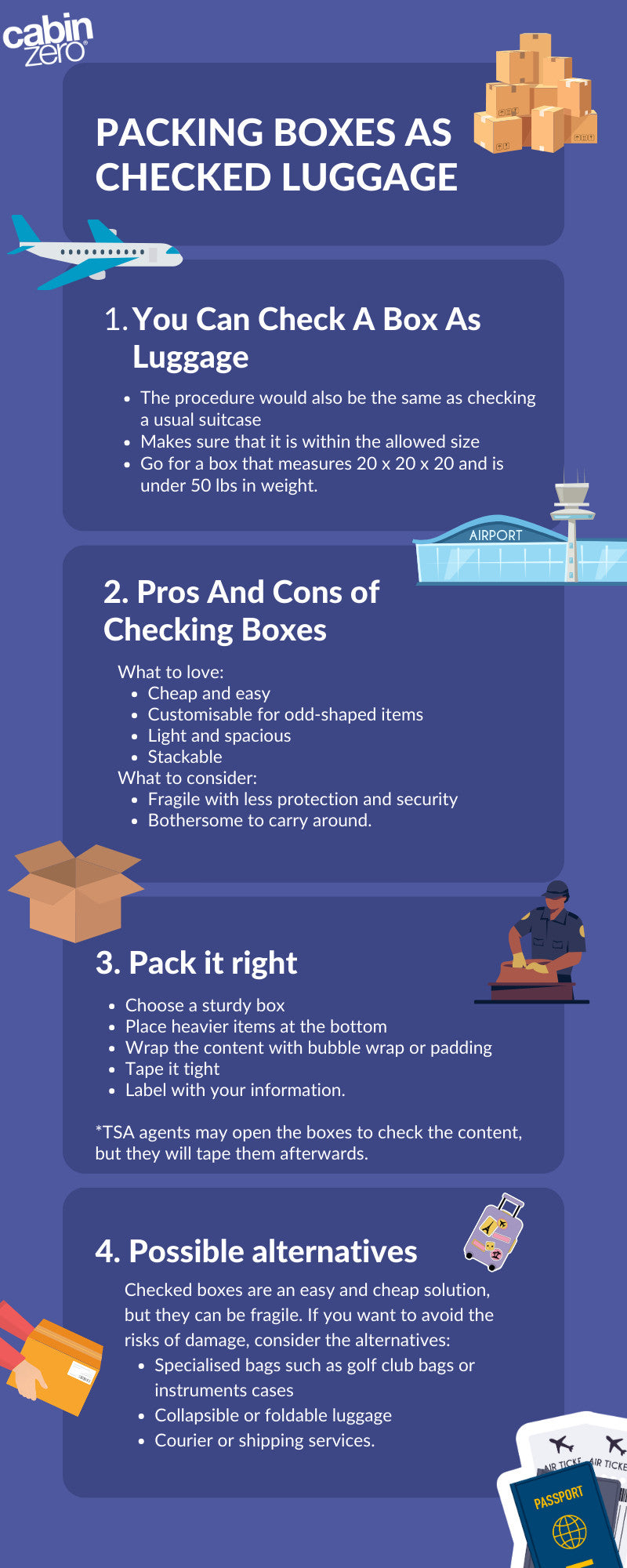
1. Can You Check A Box As Luggage?
Yes! The procedure would also be the same as checking a usual suitcase. Airlines and airport crews won’t bat an eye seeing you checking them in (through other passengers may, but don’t mind them). You can even carry empty cardboard boxes as a carry-on, the TSA themselves stated.
However, there are two main things you need to know. First, due to airlines’ checked luggage policies, you should take the size of your box into account. If you want to be safe, we recommend going for a box that measures 20 x 20 x 20 and is under 50 lbs in weight.
Second, a box does not offer the same level of protection as a suitcase. Thus, knowing how to pack breakable items in the box is crucial (we will discuss this in later sections).
Keep in mind that your box can be opened and checked, if necessary, by the security personnel. For this, we have two recommendations for you. First, pack your box in a way that is easy to open and repack.
Sometimes, for security purposes, your box has to be opened. If it’s not properly closed, it would be your items which get the damages. Second, don’t put anything valuable, either financially or emotionally, inside the box. Consider putting it in a suitcase, in your carry-on, or in your personal item.
Fun fact: Did you know about balikbayan boxes? The terms refer to the boxes full of gifts the Filipinos working around the world send to their family back home. It’s seen as a tradition and a way for Filipinos to connect with their loved ones at long distances.
Pieces and Weight Restrictions
These regulations frequently include restrictions on the number of luggage that can be checked per person. Most flights allow one or two checked baggage per passenger, however, verify with your airline since this may differ.
In addition to the number of bags allowed, airlines limit the weight of each checked bag. The weight restriction varies by airline, although it is normally between 50 and 70 pounds (23 and 32 kilograms).
Checked luggage typically has maximum linear dimensions (length + breadth + height) ranging about 62 inches (203 cm). Again, it's critical to double-check the particular size restrictions imposed by your preferred airline, as they might vary.

Using a box as checked luggage is more popular than you think. Photo by Krakenimages.com - stock.adobe.com
These aspects are crucial to follow since most airlines have strict regulations about size and weight. While oversized baggage might not be accepted, overweight ones require additional fees. For example, American Airlines charges from $100-$200 dollars for one bag, depending on its exact weight. Japan Airlines even charges up to $600 a piece.
Pros And Cons Of Using Cardboard Boxes As Checked Luggage
Here’s why you should consider packing in boxes:
- Save you money - dirt cheap and available everywhere
- Lighter and more spacious than your average suitcases - you can check more items than usual
- Easier to fit odd-shape items - scissors, some tape, and a skilful hands are all you need
- Stackable to save space - no handles and wheels to get in your way
- A good last-minute solution - easy to find and replace.
However, as we know, nothing is completely perfect. For all of its advantages, the boxes have their own share of problems:
- Less durable than suitcases - they can get damaged easily, especially from rain and other bags in transit
- Hard to transport - your back will hurt unless you have a baggage cart nearby
- Lack of security features - can be easily opened or tampered with.
What You Can’t Pack In Check Luggage
In the interest of passenger safety, airlines have a comprehensive list of prohibited items that cannot be carried in checked baggage. These items include:
- Alcoholic Beverages Over 140 Proof
- Gasoline, Butane & Propane
- Chemicals Or Hazardous Substances
- Hair Styling Tools That Contain A Gas Cartridge And Are Butane-Fueled
- E-Cigarettes And Vapes
- Electronics With Lithium Batteries
- Engine-Powered Equipment With Residual Fuel
- Firearms Such As Hand Grenades Or Rocket Launchers
- Flammable Liquid, Gel, Or Aerosol Paint
- Lighters With Fuel (Unless Properly Stored In A Dot Approved Container), Lighter Fluid And Matches
- Live Specimens Such As Coral Or Fish
- More Than 2l Or 2kg Of Gels, Liquids Or Aerosols
- Poisons Like Pesticides And Cyanide And Radioactive Material
- Realistic Replicas Of Explosives And Incendiaries
- Sharp Objects Such As Knives, Razors Or Scissors
- Spray Bug Repellent, Spray Paint, Spray Starch, Cooking Spray and Self-defence Spray.
As a rule of thumb, anything that can ignite during the flight due to friction, such as lighter fluid or crackers, can’t be checked in. Likewise, anything that are dangerous such as chemicals or sharp objects, are a big no-no.
The above list isn’t extensive and covers only some of the most popular cases. If you are still unsure, check with the TSA’s information page and the airlines.
CabinZero tips: You should keep track of what you pack (via a checklist or photographs). That way, you can be on top of everything if there’s an issue with your luggage.
Be mindful of what you pack, and you’re golden.
Maximum Size And Weight For A Box Checked As Luggage
As mentioned above, the policies vary among airlines. Down here would be a list you can use as a reference
American Airlines
- Size limit: 62 in/158 cm
- Weight limit: 50 lbs/23 kg
British Airways
- Size limit: 35.5 x 29.5 x 16 in/90 x 75 x 41 cm
- Weight limit: 50 lbs/23 kg
Delta Airlines
- Size limit: 62 in/158 cm
- Weight limit: 50 lbs/23 kg
Frontier Airlines
- Size limit: 62 in/158 cm
- Weight limit: 50 lbs/23 kg
Emirates Airline
- Size limit: 59 in/150 cm
- Weight limit: 50 lbs/23 kg
Lufthansa
- Size limit: 62 in/158 cm
- Weight limit: 50 lbs/23 kg
Alaska Airlines
- Size limit: 62 in/158 cm
- Weight limit: 50 lbs/23 kg
easyJet
- Size limit: 108 in/274 cm
- Weight limit: Up to 50 lbs/23 kg
Air France
- Size limit: 62 in/158 cm
- Weight limit: 50 lbs/23 kg
Air Canada
- Size limit: 62 in/158 cm
- Weight limit: 50 lbs/23 kg
Southwest Airlines
- Size limit: 62 in/158 cm
- Weight limit: 50 lbs/23 kg
Japan Airlines
- Size limit: 79 in/201 cm
- Weight limit: 50 lbs/23 kg.
If you decided to stick with carry-on only travel though, if checked luggage is too much of a hassle, check out our guide on all major airlines carry-on regulation.
Tips On Packing Boxes As Checked Luggage
1. Paying Attention To The Material
We can not stress this enough, always choose a sturdy box. One made of thick cardboard or hard plastic that can endure handling and shipment would be great. Don’t use random and old boxes you happen to stumble upon.
2. Protecting Corners And Seams
Use strong packing tape to reinforce the box's corners and seams. It works as an additional reinforcement to the material. You don’t want your boxes to be collapsed.
3. Packing fragile items
For fragile items, remember to protect them with soft wrapping materials such as bubble wrap or foam padding. If they are not available, your clothes should work as well. We recommend a jacket or sweater since they are thicker.
Also, always put these items in the centre of the box. Other items will also help minimise any potential damage. For extra measure, putting a “fragile” label may help.

4. Maintaining balance
To build a sturdy basis, place heavier things at the bottom of the box. This will assist in keeping the box from tipping over or becoming imbalanced when being handled.
Lighter goods should be stacked on top of heavier ones to prevent crushing or squeezing the items beneath.
5. Avoiding overpacking
Besides weight and size limitations, make sure your boxes are sealed being built or bursting. They are much vulnerable in such circumstances.
6. Labelling the box
Mark the box clearly with your name, contact information, and destination address. Unlike suitcases, chances are your boxes look the same as others.
This will make it easy to identify your luggage and guarantee that it arrives at its destination. Use a permanent marker or securely affix a label on the box.
7. Double protection
For extra piece of mind, consider packing the content in a plastic bag. Wrap them in extra layers is never a bad thing, considering the journey they are going to take in the cargo hold.
8. Taking pictures for security/insurance purposes
Consider photographing the box and its contents before sealing it. These images can be used as proof in the event of damage or loss, as well as to support any insurance claims you may need to file. It is not uncommon that items in a suitcase are improperly managed, especially when your suitcases are made of plastic.
Understand the potential risks
1. Potential damage
This comes as no surprise. The material of a box just cannot provide the same protection as suitcases or even backpacks. It is important to recognise this to set correct expectations and choose which items to pack accordingly.
2. Inconvenience

Unlike traditional tools such as suitcases or backpacks, boxes don’t have either wheels or compartments. These limitations not only cause problems carrying your boxes around but also during the packing process.
When landing at an airport, ask the employees where the trolleys are. In addition, if you need something during your travel, you have to unpack and repack your boxes.
3. Limited durability
Even the sturdiest boxes can’t make it past a long trip. It means that your parcels may survive the first leg but not the second leg of your journey. Therefore, you shouldn’t reuse cardboard boxes multiple times/trips. Be aware of this and think of a way to retrieve your items if your box is damaged.
Possible alternatives
If you feel a box is not a great piece of checked luggage anymore, here are some alternatives for you.
1. Specialised bags
Consider using speciality bags that are made to fit certain things. If you're travelling with a musical instrument, such as a guitar, a customised guitar case provides more protection and security than a generic box.
Similarly, golf club bags and ski packs are designed to transport recreational equipment safely. These specialist bags are frequently intended to comply with airline standards, ensuring that your belongings are treated properly throughout travel.
2. Collapsible or foldable luggage
Consider collapsible or folding baggage for added convenience and versatility. These novel designs let you pack your items in a compact and space-saving manner.
When not in use, these bags fold or collapse conveniently for storage, taking up little room in your house or on your trips. Any collapsible or folding baggage you purchase must meet airline size and weight requirements.
3. Courier or shipping services
Do you have products that cannot be accommodated within ordinary airline luggage limitations? Or you just want a more safe and dependable mode of transportation. If you find yourself in those situations, you may employ courier or shipping services.
This allows you to deliver your items individually, giving you more flexibility and peace of mind. While this alternative is often more expensive, it assures the secure shipment of your things outside the constraints of airline baggage restrictions.
FAQs
1. Is Additional Insurance Necessary When Checking A Box As Luggage?
It depends on the items that you carry in your boxes. Even though airlines compensate for damaged or lost luggage, it might be insufficient. Review the insurance policies carefully and check some travel insurance to make an informed decision.
Typically, there are certain items we don’t recommend checking in, even though the airlines allow them. Checked bags go missing all the time. Therefore, you should keep the following things in your carry-on or close to your body:
- Passports, boarding passes or other essential documents - this is pretty obvious, but you can’t board the plane without them
- Prescription medicine - don’t forget these
- Daily necessities - things that you will use during the flight
- Credit card, cash and valuable items
- Jewellery, particularly those of sentimental value
- Laptops - you can check them in, but you shouldn’t
- Electronics - checking anything with batteries is risky business
- Car or house keys
- All of your clothes - leave at least one change of clothes in your carry-on.
- Camera film - what do you know, the x-ray on the scanning machines harms films and causes them foggy.
2. Should And Can I Lock My Box?
Most airlines advise passengers to lock their checked luggage for security purposes. Since security might need to check your luggage, it is recommended to use locks that are easy to open and close such as TSA-approved locks.
However, as your boxes are made of cardboard, you might have to be extra careful in taping them (and always wrap items inside). If you choose a plastic box, consider alternative options such as zip ties, plastic seals, cable locks, or luggage straps.
3. Will The Airline Provide Additional Protection For A Checked Box?
Unfortunately, the answer is no since a checked box is treated the same as a suitcase. Of course, the airlines would handle the checked luggage as carefully as possible. But understand that the risks do exist.
Plus, they are unlikely to be held accountable for any damages to your checked boxes. Therefore, it’s best to take matters into your own hands and tape your packages as securely as possible. For more information, refer to our packing tips in the above section.

A Summary
In conclusion, for the question, can you check a box as luggage? The answer is yes. However, precautions to protect your items play a significant role in the overall experience.
If the risks we have mentioned make you feel worried, it is not too late though. You can just send it to a courier or a shipping service.
Ultimately, the type of luggage you choose is determined by your preferences, the nature of your items, and the unique needs of your trip. We hope the article can facilitate you to make an informed decision that will not cause any regret afterwards.
Bui Hoang Hai

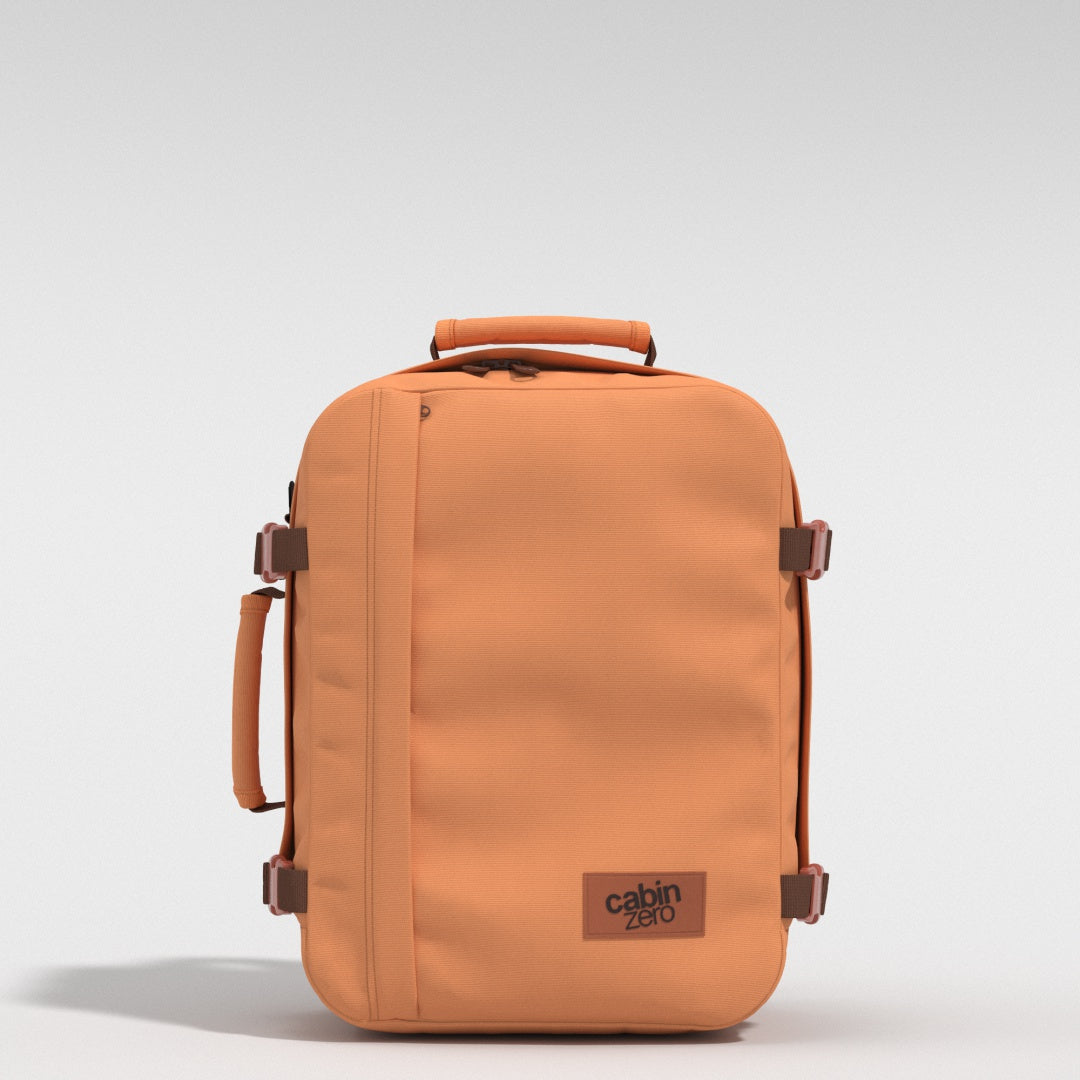
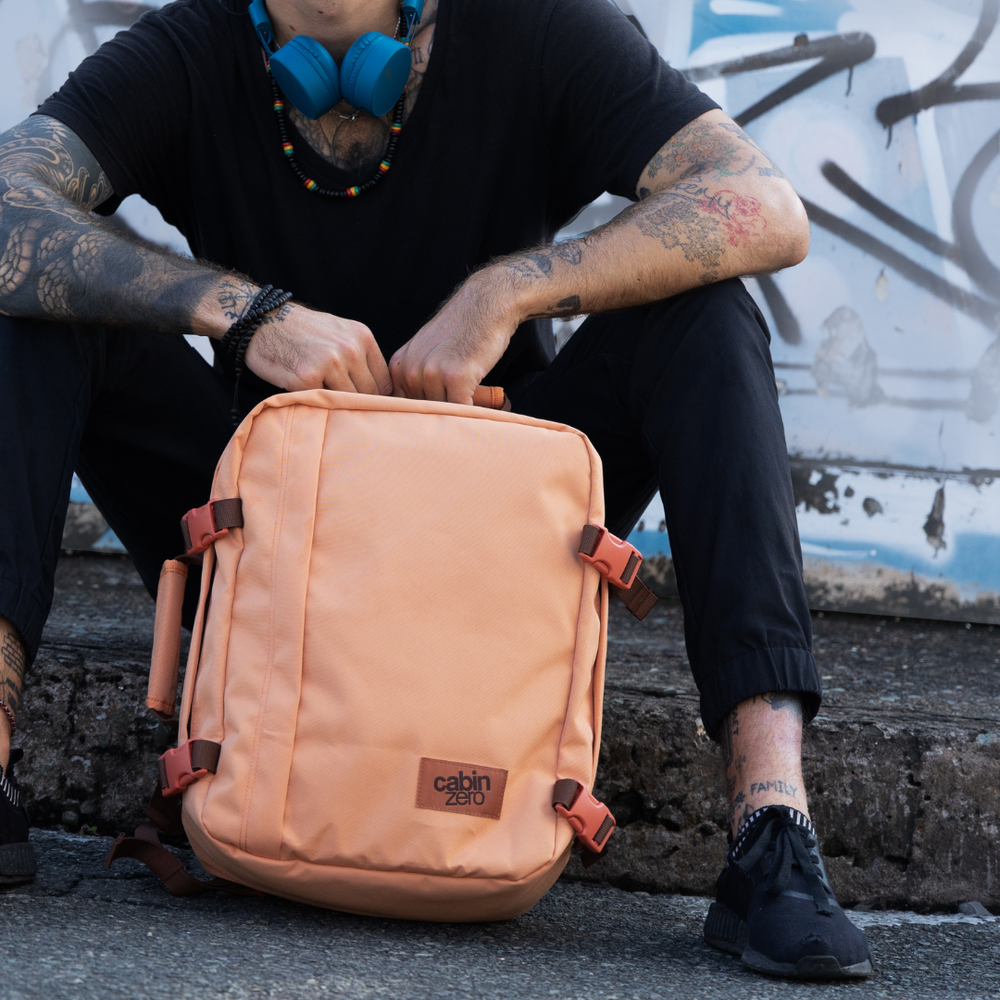
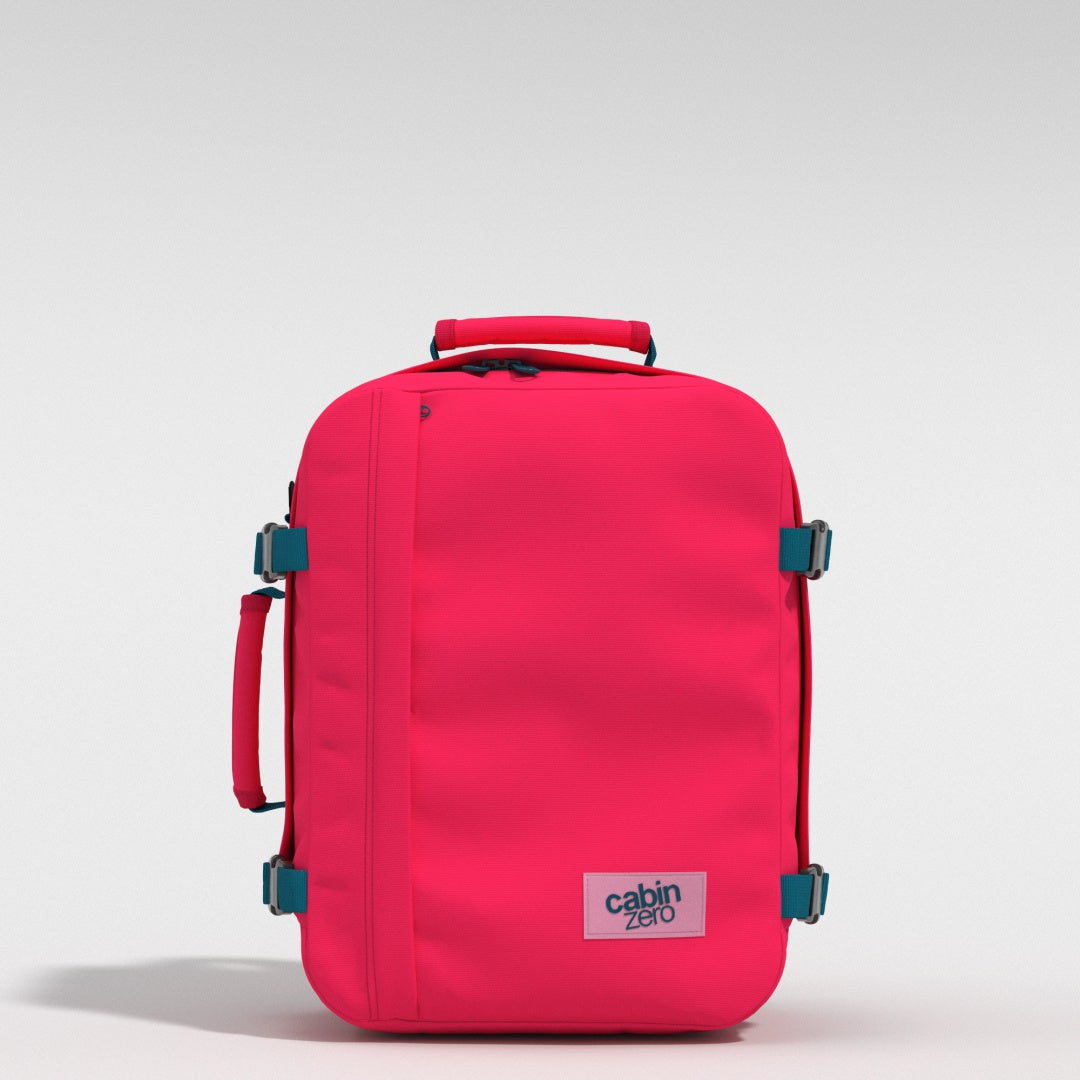
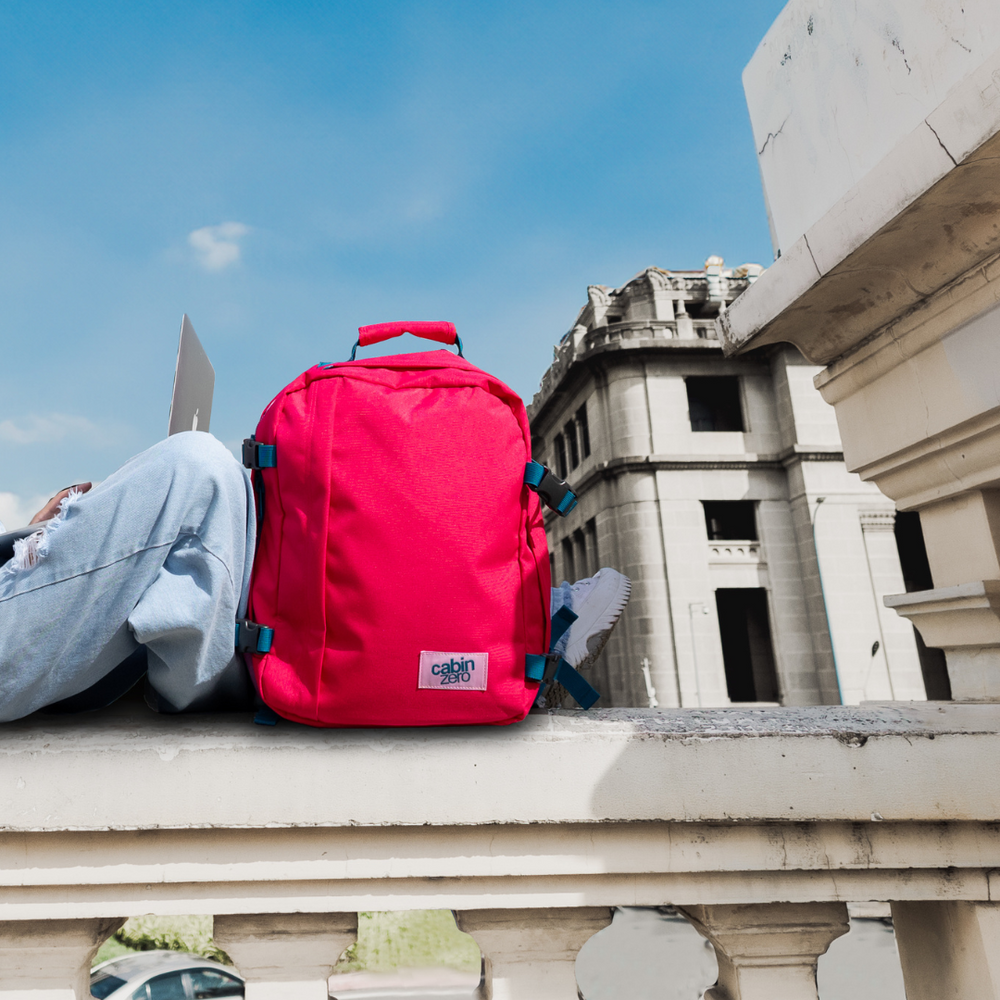
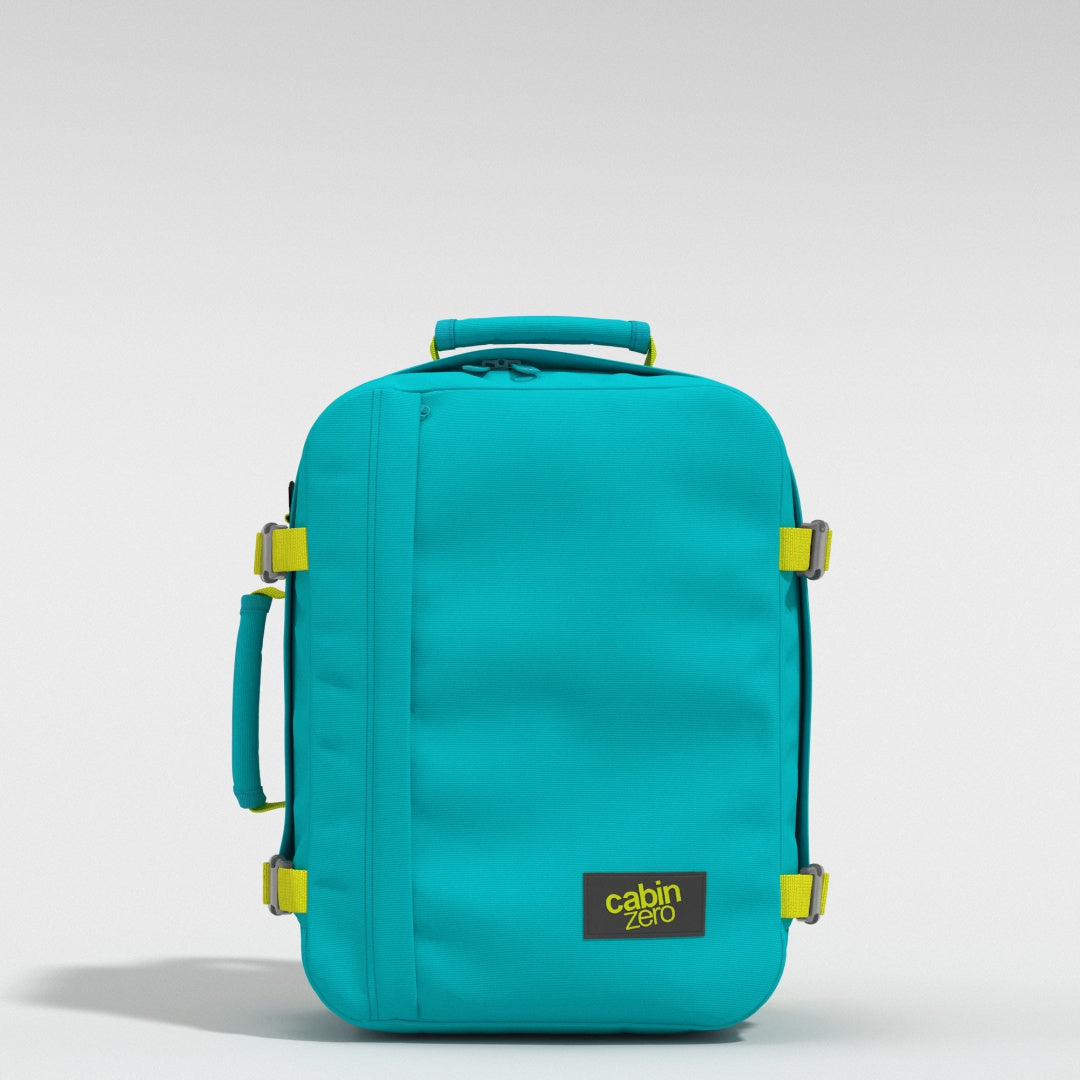
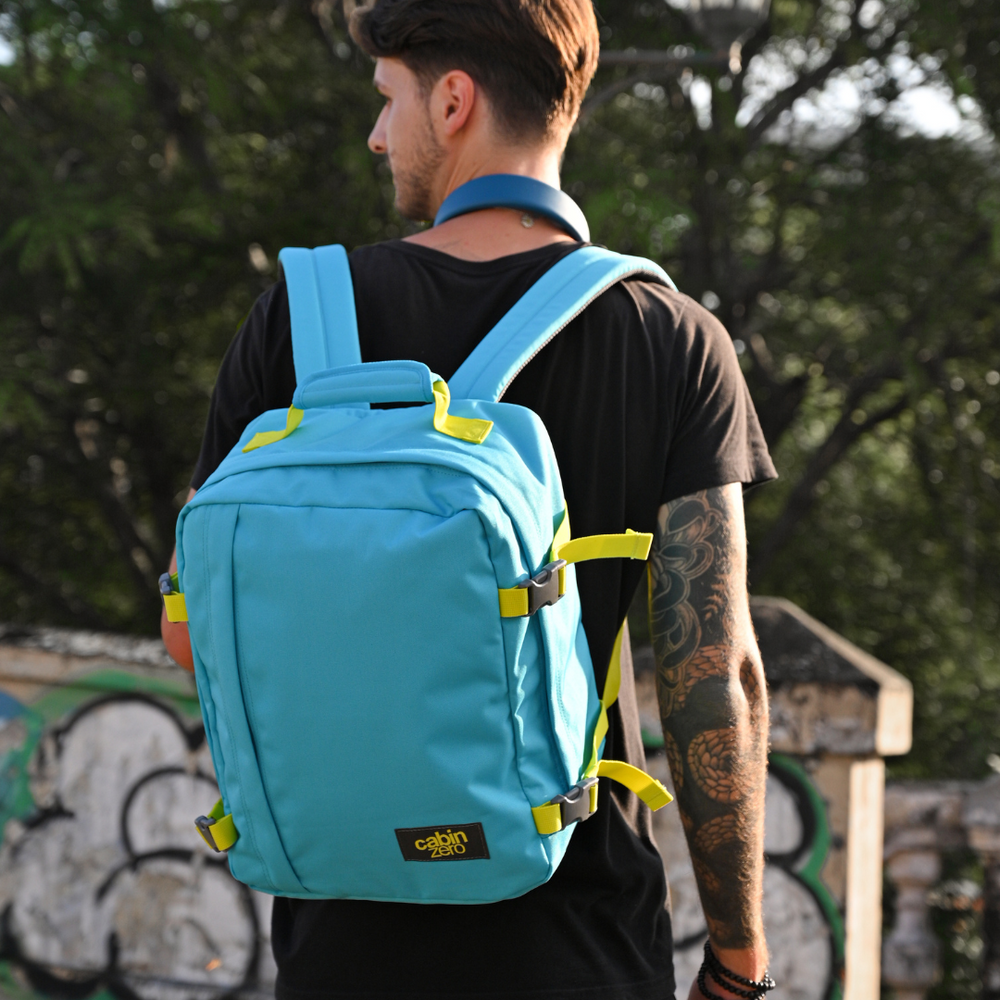
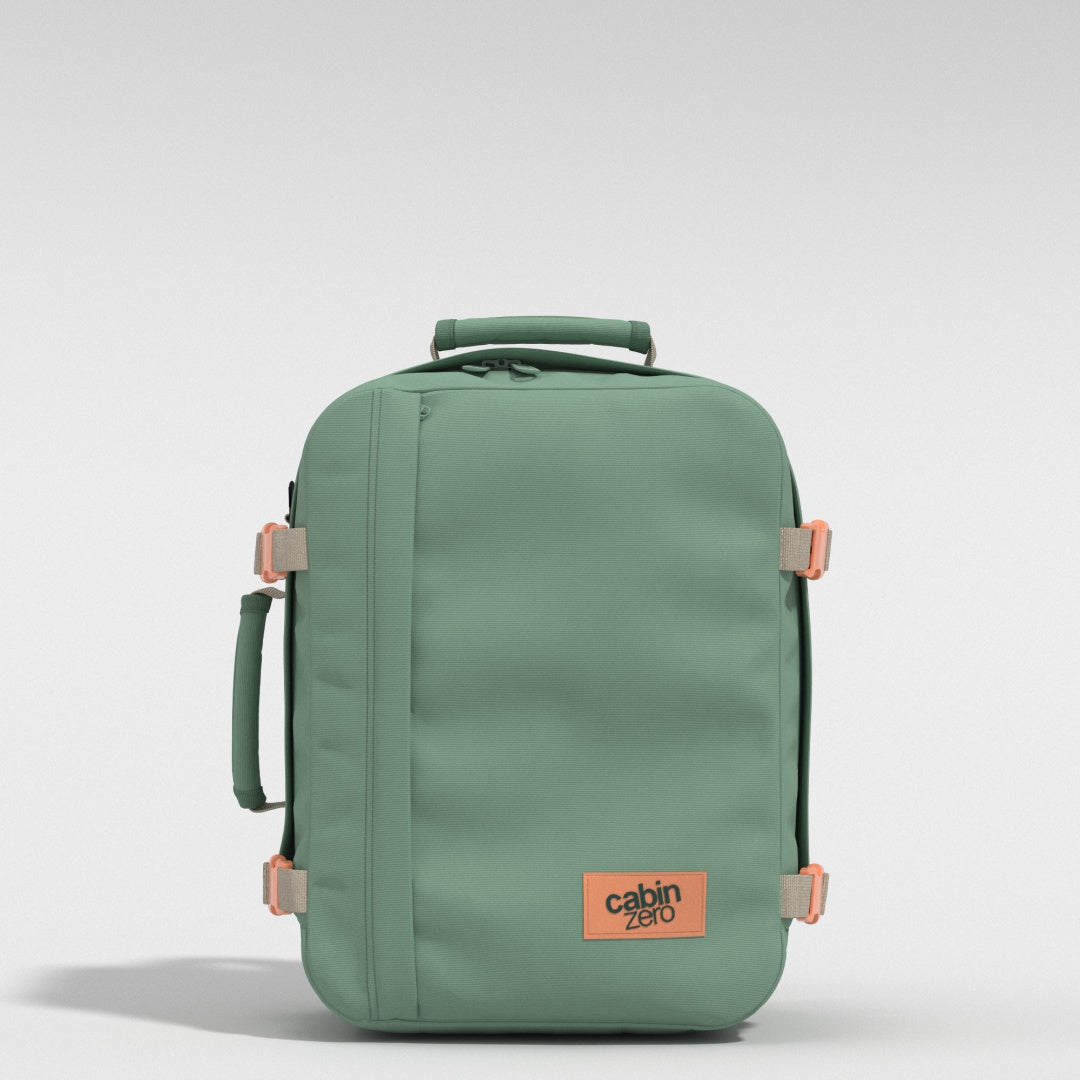
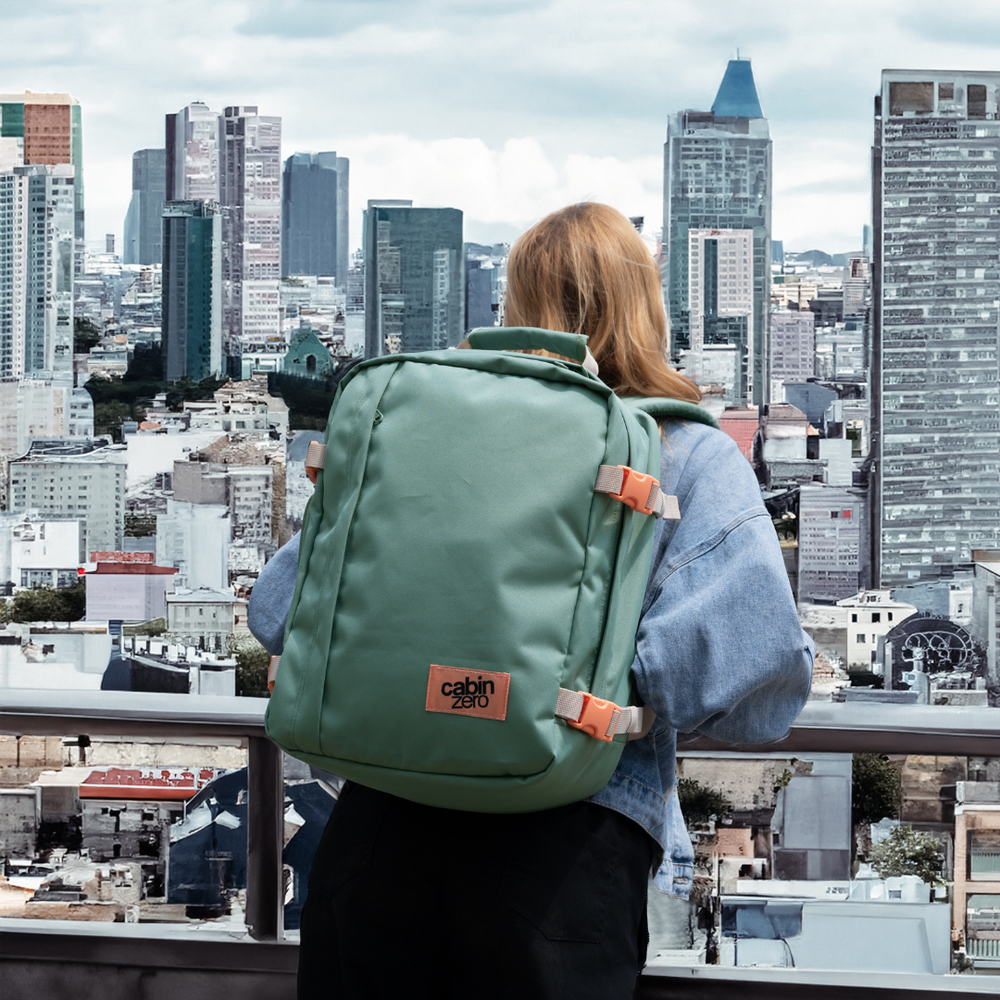
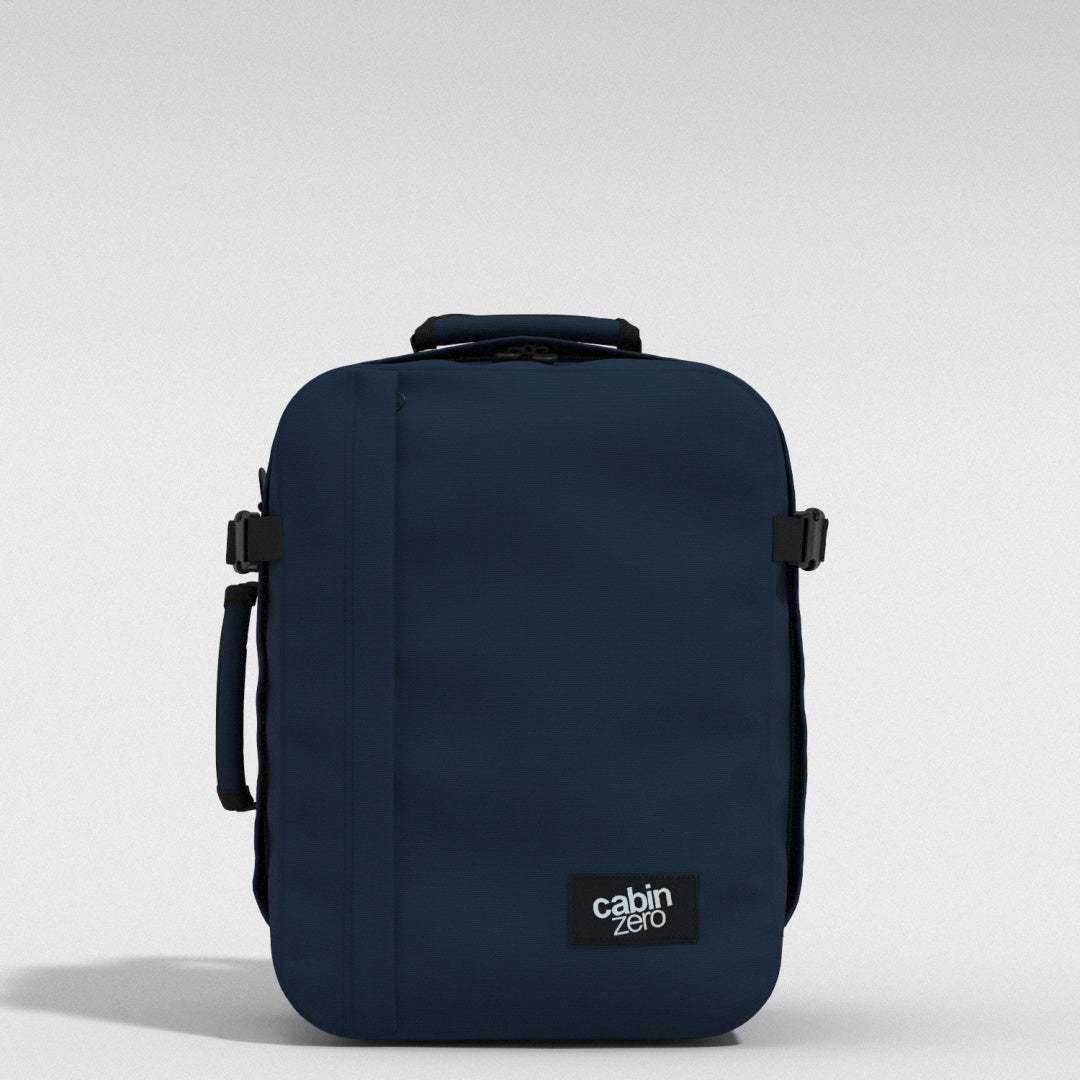
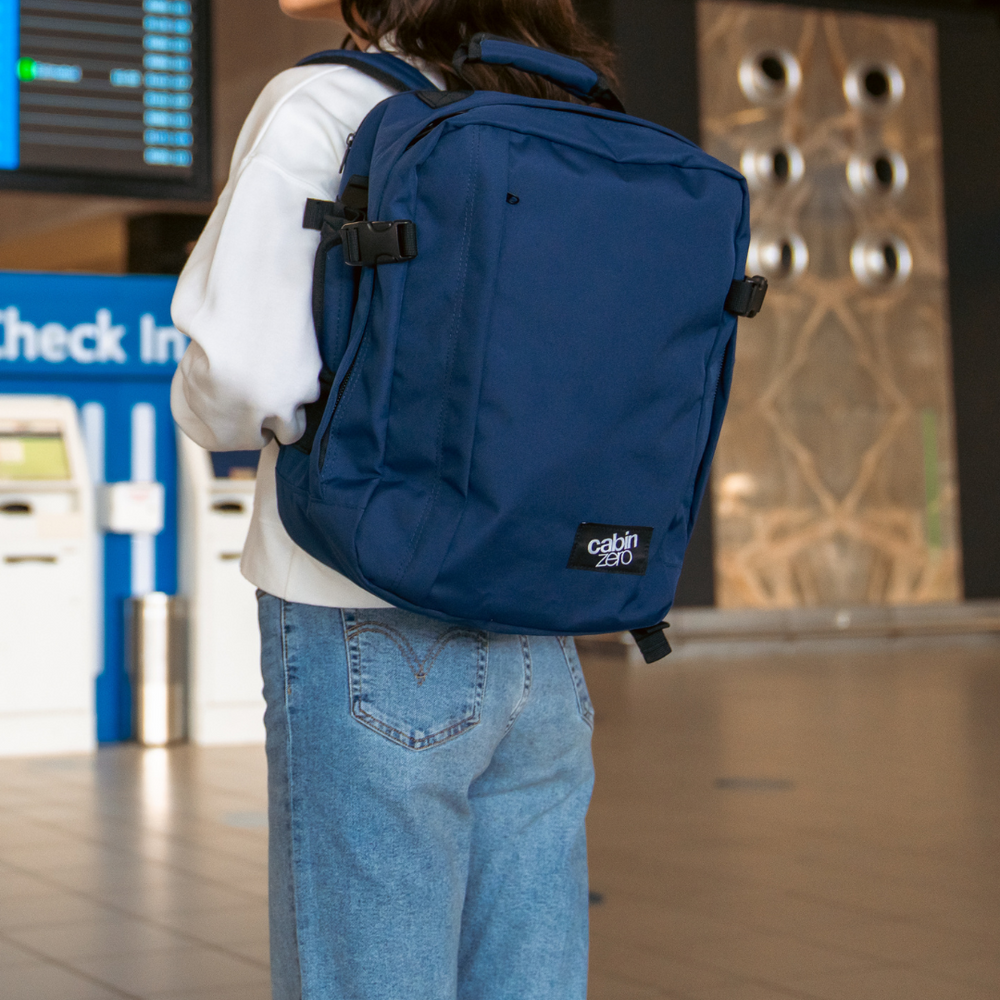



Leave a comment